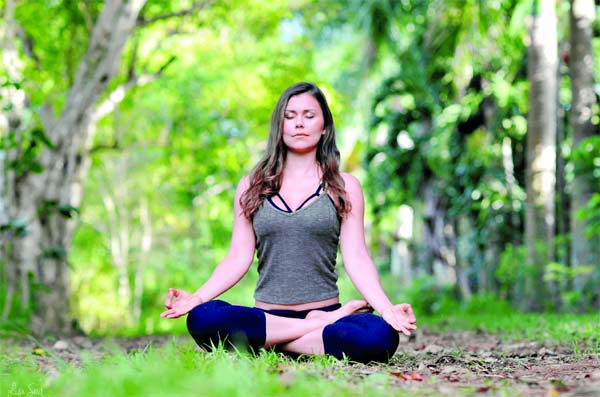
Weekend Plus Desk :
One of the biggest mistakes people make when it comes to starting a meditation practice is setting the bar too high for themselves. It’s not really anybody’s fault. We don’t have too much information about what meditation truly is, and how to do it right.
Most of us confuse meditation with being able to silence the mind, but that’s the aim of this practice, not the practice itself. What this means is that you will not be able to sit in silence, both externally and mentally, unless you work your way to it. And how does one do that? By meditating, of course.
Before you start your meditation practice, it is important to understand what it is.
In simple terms, meditation means a one-point focus
You may be focusing on your breath, one single thought, a mantra, a body movement, or the flame of a candle. As long you maintain that focus, you are in a meditative state. Many people think that if they are unable to stop the thoughts in their mind, they are failing at meditation. But this is not the case. The point is to learn to let the thoughts pass without engaging with them.
You have to work your way up when it comes to meditation
This means that you can’t go straight to a 45-minute meditation session, and expect to be able to sit through it. Progress slowly. Start with shorter meditations, and add a minute or two every week.
Explore different kinds of meditation
to discover what your style is. Are you someone who enjoys chanting? Maybe focus on breathing? Maybe you like music that helps you concentrate, or you prefer silence? Guided meditations? You won’t know what your meditation style is unless you try different things.
Exercise!
Meditation requires staying still for extended periods of time. You will not be able to do this if your posture is off, or you have weak muscles. In Ashtanga yoga, one doesn’t start meditating unless they have mastered the asana practice. This is because it is believed that the body needs to be cleansed and prepared for meditation, or for the extended periods of stillness.
Maintain a meditation journal
The main purpose of any spiritual practice is to cultivate self-awareness. Meditation brings your awareness to a deeper level, and has the potential to connect you with your inner self. But it’s not magic. It won’t just happen on its own. You have to make it happen, and one of the ways to do this is to maintain a meditation journal where you track your inner journey as it progresses with your practice.
One of the biggest mistakes people make when it comes to starting a meditation practice is setting the bar too high for themselves. It’s not really anybody’s fault. We don’t have too much information about what meditation truly is, and how to do it right.
Most of us confuse meditation with being able to silence the mind, but that’s the aim of this practice, not the practice itself. What this means is that you will not be able to sit in silence, both externally and mentally, unless you work your way to it. And how does one do that? By meditating, of course.
Before you start your meditation practice, it is important to understand what it is.
In simple terms, meditation means a one-point focus
You may be focusing on your breath, one single thought, a mantra, a body movement, or the flame of a candle. As long you maintain that focus, you are in a meditative state. Many people think that if they are unable to stop the thoughts in their mind, they are failing at meditation. But this is not the case. The point is to learn to let the thoughts pass without engaging with them.
You have to work your way up when it comes to meditation
This means that you can’t go straight to a 45-minute meditation session, and expect to be able to sit through it. Progress slowly. Start with shorter meditations, and add a minute or two every week.
Explore different kinds of meditation
to discover what your style is. Are you someone who enjoys chanting? Maybe focus on breathing? Maybe you like music that helps you concentrate, or you prefer silence? Guided meditations? You won’t know what your meditation style is unless you try different things.
Exercise!
Meditation requires staying still for extended periods of time. You will not be able to do this if your posture is off, or you have weak muscles. In Ashtanga yoga, one doesn’t start meditating unless they have mastered the asana practice. This is because it is believed that the body needs to be cleansed and prepared for meditation, or for the extended periods of stillness.
Maintain a meditation journal
The main purpose of any spiritual practice is to cultivate self-awareness. Meditation brings your awareness to a deeper level, and has the potential to connect you with your inner self. But it’s not magic. It won’t just happen on its own. You have to make it happen, and one of the ways to do this is to maintain a meditation journal where you track your inner journey as it progresses with your practice.

